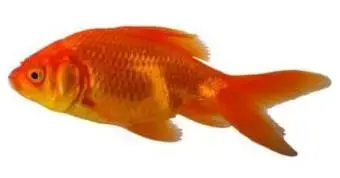| Back to Back Issues Page |
 |
|
The Goldfish Gazette, Issue #021 -- Recognizing Disease Early September 29, 2015 |
Goldfish Care Tips and GuidelinesA Free Monthly Resource For Goldfish Enthusiasts In This Issue
Disease symptoms a Goldfish is displaying may be hiding the disease that is the real problem. Recognizing Disease Early
Most Goldfish diseases are opportunistic, meaning they only attack the fish when its natural defenses have been compromised. The usual causes of this are:
When the fish’s natural defenses have been weakened, the fish may be attacked by bacterial, fungal or parasitical pathogens already existing in any body of water. Careful Observation Is CriticalIt is important to closely observe your goldfish regularly. I don’t mean just look at your fish, I mean really look closely.This skill, and it is a skill you get better at the more you practice, separates the expert from the amateur. You should be looking for injury, lack of appetite, listless behavior, twitching or dashing around the aquarium as if startled, and the biggest indication that something is wrong, clamped fins. Goldfish start clamping their fins at the very early stages of illness. A fish will occasionally twitch a fin, but it shouldn’t be doing it regularly. Don’t ignore this behavior, as this is the early signs of a fish becoming unwell. Identify The Disease(s)As soon as you suspect a fish is unwell, move it to your sickbay. Some diseases show obvious symptoms such as fungus patches or white pinhead size spots distributed over the body or fins. Others are not so obvious.If a red or orange/red Goldfish has blood red patches on its body or fins, it can become quite advanced before it is noticed. Early indications that something was amiss would have been clamped fins. An owner could assume that the fish has a bacterial disease such as red pest and proceed to treat the symptoms with the appropriate medication. However, these symptoms may be hiding the true problem. If a Goldfish is showing these symptoms, and is around 2 inches in body length, I would check very carefully for body flukes. I’ve been caught out by this situation, and it took me a while to work out why the fish wasn’t responding to the medication. Another reason for blood red spots appearing could be Anchor Worm. In this case you should see a small white thread protruding from the center of the spot. Treating Anchor Worm with a salt bath would be just as ineffective as it would be for treating flukes. If the diagnosis is correct, and the proper medication is used, Goldfish start responding to treatment fairly quickly, usually within a few days. Once you start treating the real cause of the problem, the mild salt bath your fish should be in will take care of any other opportunistic diseases that may be present. Parasite InfestationsI have mentioned that most diseases are opportunistic, attacking Goldfish when their natural defenses are weakened.Parasitic infestations are slightly different. Flukes, (body and gill) can be present on a healthy fish in small numbers without causing too much trouble. Anchor Worms and Lice are a more serious problem. Their spread is affected by how crowded your fish are. Both of these parasites are very unpleasant for your fish, and a heavy infestation will kill them. I go to great lengths to avoid introducing parasites to my fish. I haven’t had a parasite infestation for many years. I immediately treat for flukes, and keep them separated from my other fish for at least two weeks, carefully watching for lice and Anchor Worm. I don’t treat for lice or Anchor Worm because the treatment requires several doses, and as infestation is less likely I don’t want to subject the fish to multiple chemical treatments if I don’t have to. To read more about recognizing and treating Goldfish diseases click here... Comments? Ideas? Feedback? I'd love to hear from you. Just reply to this e-zine and tell me what you think, or what topics you want covered. Next Month's Topic Goldfish over winterwww.facebook.com/aboutgoldfish |
| Back to Back Issues Page |